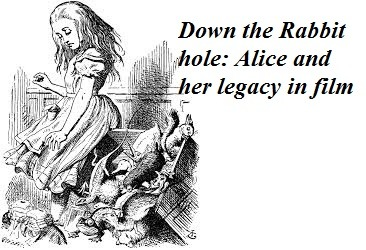
ARCHIVAL NOTE: VOTING FOR THE 2019 PROJECT IS NOW OPEN!
MAJOR SPOILERS AHEAD.
ALSO, OBVIOUS EMPHASIS ON THE FANTASY PARTS OF THIS FILM, DESPITE HOW WELL MADE THE CIVIL WAR PLOTS ARE IN THIS FILM, I CAN’T REALLY TALK ABOUT THEM HERE … SORRY…
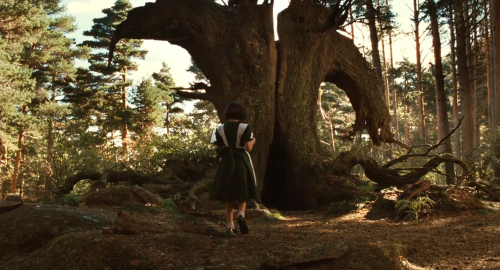
Pan’s Labyrinth is both a dark deconstruction of the down the rabbit hole trope and a warning on the corruption and disregard for humanity fascism brings. The film is one of a few examples (along with Valerie and her Week of Wonders) of how the down the rabbit hole trope can be subverted and deconstructed for an adult audience.
12 year old Ofelia moves with her pregnant mother to a house inhabited by the monstrous captain Vidal, who spends his time tracking down any dissenters to the new fascist regime. Ofelia buries herself in books, and whilst exploring a stone labyrinth, encounters a faun who claims she is the lost princess of the underworld. Ofelia has three grizzly tasks to complete if she wants to leave the real world behind. All the while the situation at home only gets more fraught and horrifying.

Whilst Ofelia is quickly identified as an Alice archetype by default, (the green dress and white pinafore she wears before the first task making this clear), what differentiates her from other protagonists I’ve looked at for this project is her willingness to escape. For Ofelia, living anywhere but home is desirable.
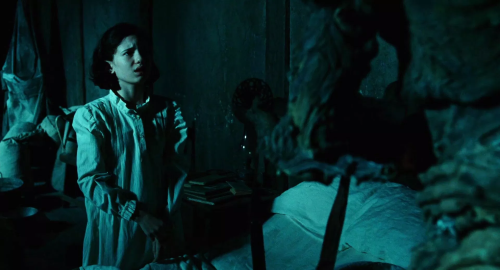
After the faun angrily comes to the conclusion that she has failed the second task due to giving into hunger for food she begs him with all her might for another chance. Most protagonists of these films and the trope codifier, Carroll’s Alice, unwittingly stumble into their lands or encounters and attempt to return home or back to some kind of normality. Ofelia meanwhile wants more than anything to leave her current circumstances behind.
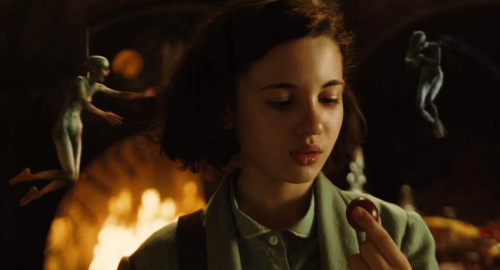
And although Ofelia does encounter animals and creatures (mainly mythological) a far darker tone is struck than a typical rabbit hole film, partly this is due to its adult audience but also due to its various plot strands regarding the brutal civil war. Ofelia’s trials have a habit of mirroring her harsh surroundings such as when Vidal starves the household, and Ofelia eats in the Pale Man’s realm, despite warnings from the faun.
Unlike other films of this genre, this mirroring gives Pan's Labyrinth an almost allegorical type resonance, and there have already been several high profile essays by scholars linking the film with its historical climate.
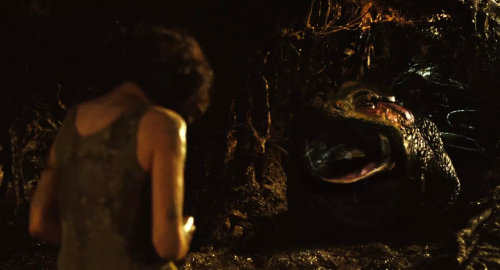
Ofelia’s decent into a tree to retrieve a key from an old toad is Alice like in text but not tone. Despite Ofelia’s assertions that she isn’t afraid, as an audience we see her vulnerability as well as bravery in this scene. The toad is the polar opposite of Carroll’s frog footman, instead of being bumbling and comedic, the amphibian Ofelia encounters is selfish, covetous and gluttonous. Ofelia gains the key by tricking the animal through offering mud as food. In a way, this scene is a similar to but offers a far darker take on the scene in Spirited Away (2002) where Chihiro gives No-Face medicine. When Ofelia crawls back out, key in hand, she finds her “Alice” dress has been forever ruined by the trees.
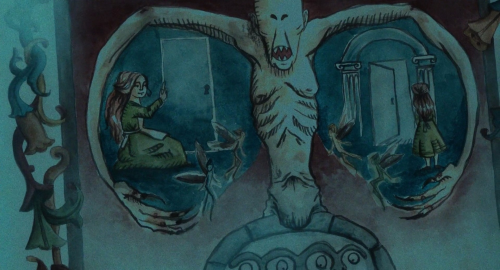
Similarly for the second task Carrollian plot points are set up then subverted. Ofelia is given a piece of chalk by the fawn and the book of crossroads, which gives her details on the pale man’s realm (the illustration again references Carroll by the use of a young girl in an apron dress drawing a door).
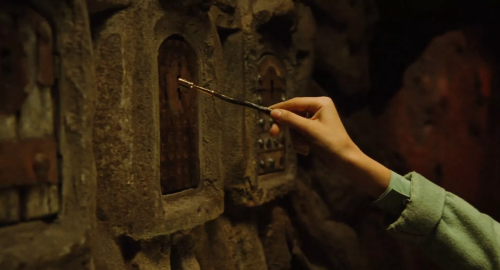
Ofelia follows the instructions and crawls through a door to the hall of the pale man’s realm, where she takes a key and has to put it in the correct lock. This situation recalls Alice’s trials in Wonderland’s hall of doors:
a tiny golden key, and Alice’s first thought was that it might belong to one of the doors of the hall; but, alas! either the locks were too large, or the key was too small, but at any rate it would not open any of them.
Yet Ofelia once again is in a far more perilous situation. At the other end of the hall is the child eating pale man, and the cupboard she eventually opens reveals a sharp knife, resembling illustrations of the Vorpal sword from Carroll’s poem from Through the Looking-Glass, The Jabberwocky. This is later used to try and spill the blood of an innocent in the third task.
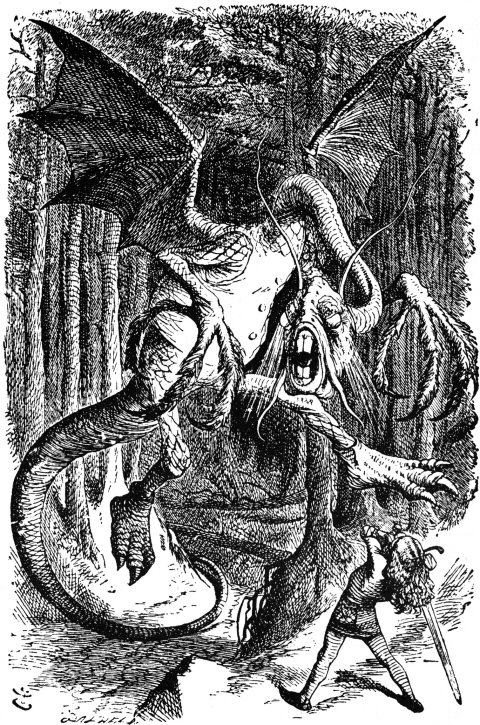

Overall Pan’s Labyrinth provides one of the finest examples of making a down the rabbit hole archetypal film for an older audience. By subverting and deconstructing the tropes audiences know, this film carves out a unique, if often dark path.
STRAY NOTES
- A musical version is apparently in development and will premiere soon.